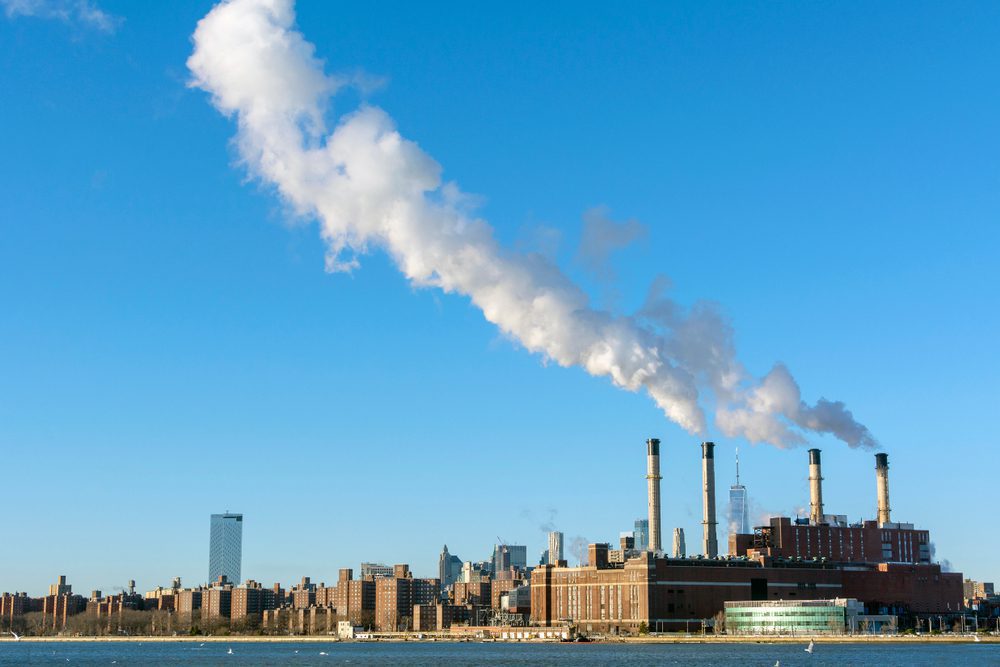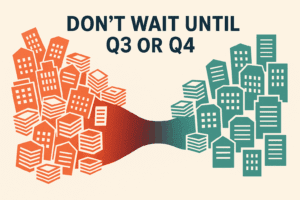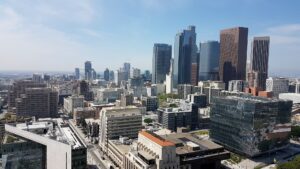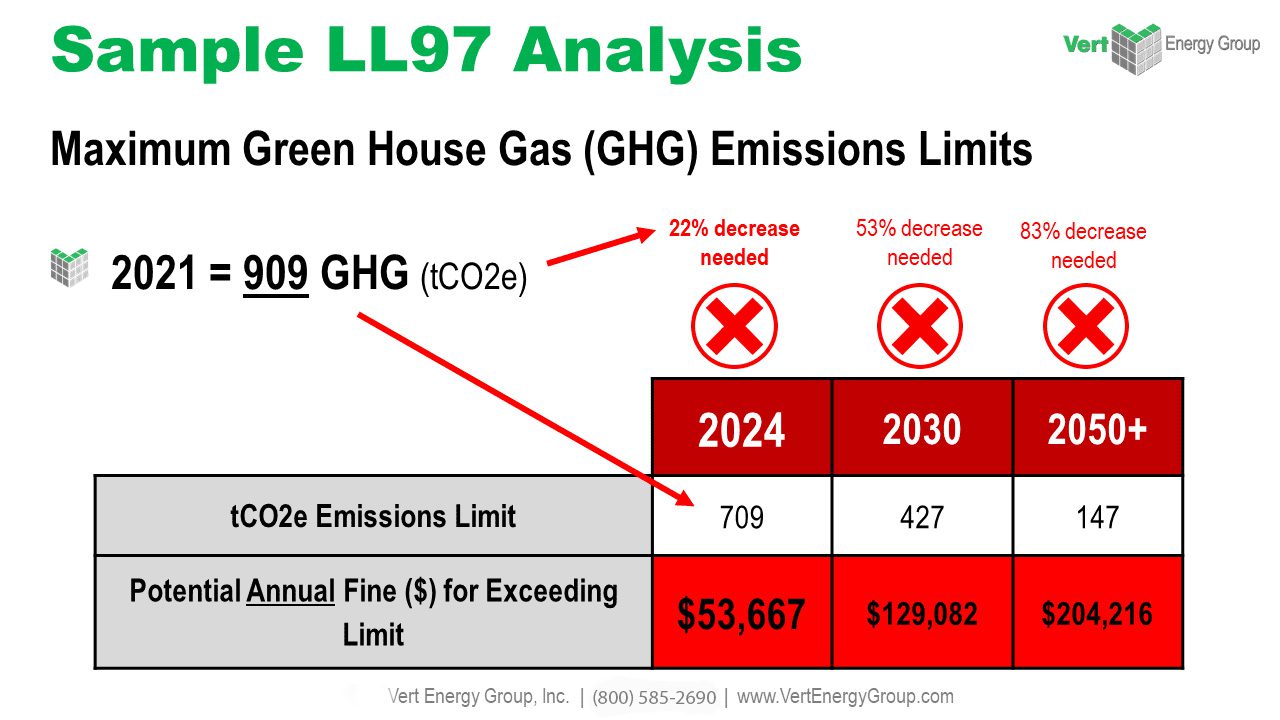The global climate crisis is one of the most pressing issues of our time. With greenhouse gas emissions playing a major role in the acceleration of climate change, it’s essential that cities across the world take action to reduce their carbon footprint. New York City is at the forefront of this movement, with Local Law 97 serving as a critical tool in the city’s efforts to combat climate change.
What is Local Law 97 and What Does it Aim to Achieve?
Local Law 97 is a comprehensive piece of legislation aimed at reducing greenhouse gas emissions from buildings in New York City. The law requires buildings over 25,000 square feet to undergo energy audits and comply with emissions limits set by the city, with the goal of reducing emissions by 80% by the year 2050. This is a bold and ambitious target, but it’s necessary to ensure a sustainable future for our planet.
Understanding the Requirements of Local Law 97
Building owners are at the heart of Local Law 97, as they are responsible for ensuring their buildings comply with the law’s requirements. The first step is for buildings over 25,000 square feet to undergo energy audits, which will identify areas where energy can be saved and emissions reduced. Building owners must also report their emissions to the city annually, providing transparency and accountability in the effort to reduce emissions.
Energy Audits
Energy audits are a crucial part of Local Law 97, as they help building owners understand the energy use and emissions of their buildings. The audits provide a detailed analysis of a building’s energy consumption, identifying areas where energy can be saved and emissions reduced. This information is used to develop an energy efficiency plan, which outlines the steps building owners can take to improve the energy performance of their buildings.
Emissions Limits
Emissions limits are a key component of Local Law 97, as they ensure that the largest and most emissions-intensive buildings in New York City are held accountable for their impact on the environment. The limits are set by the city and are based on the size and type of building, with the goal of reducing emissions to 80% of 2005 levels by the year 2050. Building owners must comply with these limits and report their emissions to the city annually, providing transparency and accountability in the effort to reduce emissions.
The Benefits of Local Law 97

Local Law 97 offers numerous benefits to both building owners and residents of New York City. By reducing emissions from buildings, the air quality in the city will improve, leading to better health outcomes for residents. Improved air quality is a crucial aspect of the fight against climate change, as air pollution contributes to respiratory illnesses and other health problems. In addition to improving health outcomes, building owners can expect to see a reduction in their energy costs as they become more energy-efficient. This will result in lower monthly bills, as well as long-term savings for building owners.
Improved Air Quality
Reducing emissions from buildings will have a significant impact on the air quality in New York City. By improving air quality, we can reduce the number of respiratory illnesses and other health problems caused by air pollution. The health benefits of reduced emissions are substantial and can lead to a healthier population, as well as reduced healthcare costs.
Reduced Energy
CostsImproving energy efficiency is a crucial part of Local Law 97, and building owners can expect to see a reduction in their energy costs as a result. By taking the necessary steps to reduce emissions, building owners can save money on their monthly bills, and enjoy long-term savings over time. In addition, reducing energy use and emissions has the added benefit of reducing dependence on fossil fuels and supporting the transition to a clean energy economy.
Resources Available to Building Owners to Comply with Local Law 97
The city of New York recognizes the importance of helping building owners comply with Local Law 97, and has made a range of resources available to support them. One such resource is the carbon offset program, which allows building owners to offset their emissions by investing in clean energy projects. This program provides an alternative for building owners who are unable to reduce emissions from their buildings, and is an important part of the city’s efforts to reduce emissions and combat climate change.
Carbon Offset Program
The carbon offset program is a critical tool for building owners who are unable to reduce emissions from their buildings. The program allows building owners to invest in clean energy projects, such as wind or solar power, and offset their emissions. This is a cost-effective way for building owners to reduce their carbon footprint and support the transition to a clean energy economy. The program is easy to use, and building owners can invest in offsets online or through a third-party provider.
The Importance of Local Action in Addressing Climate Change
The global climate crisis is a complex and pressing issue, but cities across the world are taking action to reduce their carbon footprint and mitigate the effects of climate change. New York City is at the forefront of this movement, with Local Law 97 serving as a critical tool in the city’s efforts to reduce emissions and combat climate change. The benefits of Local Law 97 are numerous, including improved air quality, reduced energy costs, and support for the transition to a clean energy economy. Building owners have access to a range of resources to help them comply with the law, including the carbon offset program. The fight against climate change is a shared responsibility, and Local Law 97 serves as a powerful reminder of the importance of local action in addressing this global issue.
Why Taking Action Now Matters
With the implementation of Local Law 97 just around the corner, building owners in New York City should start taking action now to avoid costly penalties and ensure a sustainable future for their property.
Don’t Wait for Fines to Pile Up
Be proactive, not reactive. Don’t wait for fines to pile up before making changes to your building. Start implementing energy-efficient upgrades now to stay ahead of Local Law 97 compliance requirements and avoid costly penalties. A new study estimates that landlords will face over $200 million in Local Law 97 fines next year, with that number projected to reach $900 million annually by 2030.
Going Green Pays Off

Going green pays off. Not only will energy-efficient upgrades help you comply with Local Law 97, they can also lead to significant cost savings on energy bills in the long run. Reduce your carbon footprint and save money. By making energy-efficient upgrades to your building, you’ll not only be reducing your carbon footprint and helping the environment, but you’ll also be saving money on energy costs in the long run. It’s a win-win situation.
Don’t Let Your Building Become a Statistic
Don’t let your building become a statistic. With over 3,700 buildings expected to exceed their emissions caps, don’t let your property be one of them. Invest in energy-efficient upgrades now to avoid costly penalties and ensure a sustainable future for your building.
The Future is Now
The future is now. Don’t wait until 2024 to start thinking about Local Law 97 compliance. The time to take action is now, before fines and penalties start adding up.
Be a Leader in Sustainability
Be a leader in sustainability. Show your tenants, customers, and community that you’re committed to sustainability by investing in energy-efficient upgrades for your building. Stand out from the competition and set a positive example for others to follow.
Don’t Let the Regulations Catch You Off Guard
Don’t let the regulations catch you off guard. With Local Law 97 compliance starting in 2024, don’t wait until the last minute to make changes to your building. Start planning and implementing energy-efficient upgrades now to avoid costly penalties in the future.
Take Action Now: Unleash the Benefits of a Better Energy Strategy
In conclusion, Local Law 97 is a crucial piece of legislation aimed at reducing greenhouse gas emissions from buildings in New York City. Building owners are responsible for ensuring their buildings comply with the law’s requirements, including energy audits and reporting emissions to the city. The benefits of Local Law 97 include improved air quality, reduced energy costs, and support for the transition to a clean energy economy.
The city provides resources to building owners to help them comply, including the carbon offset program. Taking action now to reduce emissions is essential in addressing the global climate crisis, and Local Law 97 serves as a powerful reminder of the importance of local action in this effort. If you are a building owner in New York City, now is the time to take action and make your building more energy-efficient. Contact VertPro.com today to learn more about how we can help you comply with Local Law 97 and reduce your building’s carbon footprint.
Unlock the potential of reducing your energy costs by scheduling a free energy audit! Get your instant quote now by simply clicking on this link: https://vertpro.com/energy-audit-instant-pricing//. Don’t wait, take action and start saving on your energy bills today!
